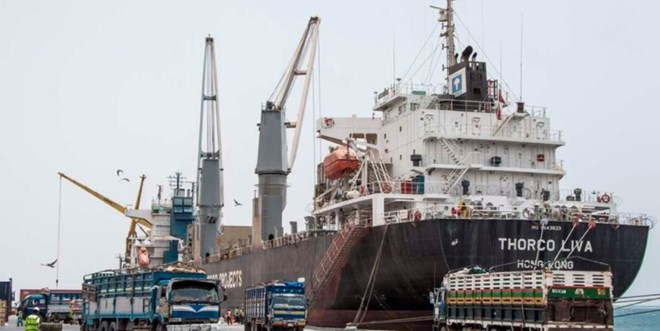
Tuesday June 29, 2021

Regional competition on ports is shaping up as Somaliland and Tanzania angle themselves to give Kenya a run for its money in shipping and logistics.
Dubai Ports World (DP World) and Somaliland have opened a new terminal at Berbera Port, and announce second phase expansion and ground breaking for an economic zone.
DP World is an Emirati multinational logistics company based in Dubai, United Arab Emirates. It specialises in cargo logistics, port terminal operations, maritime services and free trade zones.
Berbera Port’s new container terminal has capacity for 500,000 TEUs a year with its second phase expansion expected to increase capacity up to two million TEUs a year.
Berbera Economic Zone under development aims to attract investment and new businesses with an expanded port, economic zone and Berbera corridor expected to transform Berbera into an integrated maritime, industrial and logistics hub in the Horn of Africa.
“The completion of the first phase has made our vision of establishing Berbera with its strategic location into a major trade hub in the region a reality,” Somaliland President Muse Bihi Abdi said.
DP World Group Chairman and CEO Sultan Ahmed Bin Sulayem has termed Berbera as a “viable, efficient and competitive option for trade in the region, especially for Ethiopian transit cargo”, meaning it is likely to give Kenya's new Lamu Port stiff competition.
The new container terminal with a deep draft of 17metres, a quay of 400metres and three ship-to- shore gantry cranes, can handle the largest container vessels in operation today, though remains way below in annual throughput capacity compared to Mombasa.
Part of the overall Berbera plan and modelled on DP World’s Jebel Ali Free Zone in Dubai, the economic zone is linked to the port and strategically located along the Berbera to Wajaale road (Berbera Corridor).
The Berbera Corridor road upgrade project, funded by the Abu Dhabi Fund for Development (ADFD) and the UK’s Department for International Development (DFID), and the Hargeisa Bypass Road funded by UK Aid, is set for completion in quarter four, 2021 and quarter three 2022, respectively.
The road will link to the existing modern highway on the Ethiopian side and position Berbera as a direct, fast, and efficient trade route for Ethiopian transit cargo.
Tanzania on the other hand is looking to revive the $10 billion(Sh1.1 trillion) Bagamoyo port project on the eastern coast of the country, President Samia Suluhu told the country's private sector players in Dar es Salaam on Saturday.
This will create a second major sea port for Tanzania complementing the Dar es Salaam Port, which is currently giving Kenya competition for cargo destined for the hinterland through the Central Corridor, mainly Rwanda.
Tanzania inked a framework agreement with China Merchants Holdings International in 2013 to construct the port and a special economic zone aimed at at transforming the country into a trade and transport, rivaling Kenya.
It however stalled after the late President John Magufuli poked holes on the deal offered to Tanzania, saying it was not commercially viable.
Kenya is meanwhile eying business in Ethiopia and South Sudan with the newly launched Lamu Port which is part of the Sh 2.5 trillion Lamu Port South Sudan Ethiopia Transport (LAPSSET) Corridor project.
Kenya officials are in Ethiopia to market the facility.
Yesterday, they together with South Sudan and Ethiopian officials met in Addis Ababa to formalise a proposed 'Regional Framework Body' that will see the three countries operate and manage the regional infrastructure project “in a much more coordinated manner.”
Kenya Ports Authority (KPA) is however confident that investment in Kenya's ports and logistics sector, including automation of systems, will continue giving the country a competitive edge over regional peers.
Mombasa Port has an annual capacity of over 1.4 million TEUs and close to 35 million tonnes, which makes it a leading facility in the region.
Lamu Port however has a bigger vessel handling capacity than Mombasa, according to acting managing director Rashid Salim.
Its berths are 400 metres long compared to Mombasa’s 300 meters average while the depth at Lamu is up to minus 17.5 meters against 15 meters at the Port of Mombasa, amking it able to handle post-panamax ships.
“Port competition depends on the geographical location and the cost of the port and cargo movement. Different ports have different advantages but at the end of the day, it depends with the efficiency of the port,” Rashid told journalist during a recent port visit.